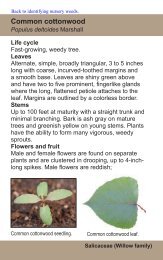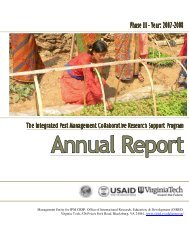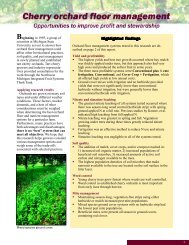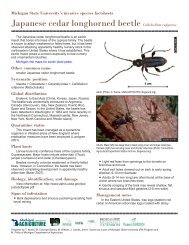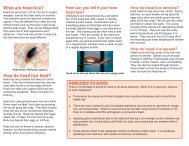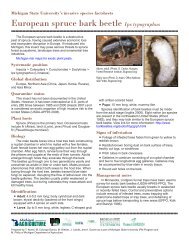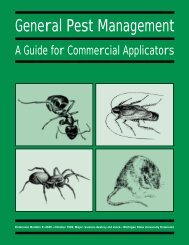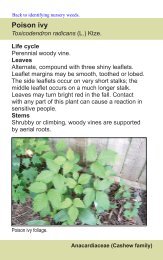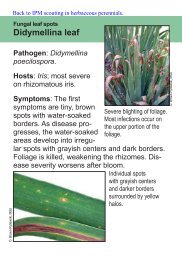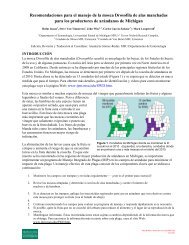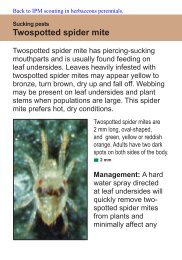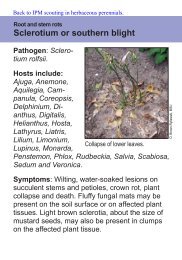Whole Manual - Michigan State University: Integrated Pest ...
Whole Manual - Michigan State University: Integrated Pest ...
Whole Manual - Michigan State University: Integrated Pest ...
Create successful ePaper yourself
Turn your PDF publications into a flip-book with our unique Google optimized e-Paper software.
C<br />
6<br />
H<br />
A<br />
P<br />
TE<br />
R<br />
WEED MANAGEMENT<br />
LEARNING OBJECTIVES<br />
After completely studying this chapter, you should:<br />
■ Be able to define a weed and its four stages of<br />
development.<br />
■ Understand the differences between annual, biennial,<br />
and perennial weeds.<br />
■ Be able to give examples of cultural weed controls.<br />
■ Know the advantages and disadvantages of the various<br />
methods of herbicide applications.<br />
■ Understand herbicide carryover and how to prevent<br />
it.<br />
■ Know what herbicide adjuvants are.<br />
Weeds are plants growing where they are not wanted.<br />
They can reduce yields by competing with crops for<br />
water, nutrients, and light. Some weeds release toxins<br />
that inhibit crop growth; others may harbor insects, diseases,<br />
or nematodes that attack crops. Weeds often interfere<br />
with harvesting operations, and at times contamination<br />
with weed seeds or other plant parts may render a<br />
crop unfit for market. Profitable crop production<br />
depends on effective weed control.<br />
DEVELOPMENT STAGES<br />
Most crop plants and weeds have four stages of development:<br />
■ SEEDLING—small, delicate, newly emerged plants.<br />
■ VEGETATIVE—plant grows quickly, producing<br />
stems, roots, and leaves.<br />
■ SEED PRODUCTION—plant’s energy is directed<br />
into producing flowers and seeds.<br />
■ MATURITY—plant produces little or no energy.<br />
Some plants begin to dry out or desiccate.<br />
LIFE CYCLES OF WEEDS<br />
Weeds can be classified according to their life cycle.<br />
The three types of plant life cycles for weeds are annual,<br />
biennial, and perennial.<br />
ANNUAL<br />
Plants that complete their life cycle in one year<br />
are annuals. They germinate from seed, grow, mature,<br />
produce seed, and die in one year or less. Annuals<br />
reproduce by seed only and<br />
do not have any vegetative<br />
reproductive parts. Summer<br />
annuals may germinate from<br />
seed in the spring, flower<br />
and produce seed during the<br />
summer, and die in the summer<br />
or fall. Winter annuals<br />
germinate from seed in the<br />
fall and reproduce and die<br />
the following year. Annual<br />
weeds are easiest to control<br />
at the seedling stage.<br />
Cocklebur.<br />
Vegetable Crop <strong>Pest</strong> Management 51<br />
Chapter 6



